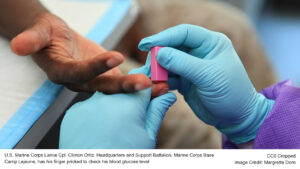In a pivotal decision, U.S. regulators have officially banned the use of Red 3 dye, or erythrosine, in the nation’s food supply. This move comes after decades of debate and follows its prohibition in cosmetics over similar safety concerns. The Food and Drug Administration (FDA) cited evidence linking the dye to cancer in laboratory rats, a finding that has prompted health advocates to call for its ban in food products. The decision aligns with the Delaney Clause, which prohibits additives known to cause cancer in humans or animals.
- FDA Bans Red 3: U.S. regulators will phase out the use of Red 3 dye in food by January 2027 due to evidence linking it to cancer in laboratory animals, aligning with international standards.
- Transition to Alternatives: Manufacturers are reformulating products with natural substitutes like beet juice and fruit-derived pigments, with some already leading the shift.
- Advocacy and Opposition: Consumer groups applaud the ban, citing risks to children, while the food industry challenges the decision, arguing that typical consumption levels are safe.
- Broader Food Safety Trends: The decision highlights increasing U.S. regulatory scrutiny of artificial additives, signaling potential future reforms to ensure public health.
Red 3, commonly found in candies, snack cakes, and maraschino cherries, will be phased out of food products by January 2027, with ingested drug manufacturers given an additional year to comply. This transition period allows manufacturers time to reformulate products—a process that some companies have already begun by using natural alternatives like beet juice and pigments from fruits and vegetables.
The Delaney Clause, part of the 1958 Food Additives Amendment, prohibits substances shown to cause cancer in humans or animals from being used in food products. While its enforcement has been inconsistent, the Red 3 ban represents a renewed commitment to this principle. This decision follows growing evidence and consumer pressure for transparency in food safety and may prompt a re-evaluation of other artificial additives currently in widespread use.
Jim Jones, the FDA’s deputy commissioner for human foods, emphasized that the decision reflects a precautionary approach to consumer safety. The agency acknowledged that while the animal studies do not directly translate to human health outcomes, the evidence was sufficient to warrant action. This regulatory shift also aligns the U.S. with countries in Europe, Australia, and New Zealand, where similar bans have been in place.
Consumer advocacy groups have praised the FDA’s decision. Dr. Peter Lurie, director of the Center for Science in the Public Interest, described the ban as overdue, highlighting the inconsistency of its previous prohibition in cosmetics but allowance in food products. The CSPI was instrumental in petitioning for this change, supported by nearly two dozen members of Congress who underscored the potential risks to children, who are particularly vulnerable due to higher consumption relative to their body weight.
Despite the regulatory change, the International Association of Color Manufacturers argues that Red 3 is safe at typical consumption levels. They reference global studies that purportedly support the dye’s safety. However, legal challenges from the food industry may arise, as the FDA has not provided conclusive evidence of the dye causing cancer in humans. FDA Commissioner Dr. Robert Califf noted the importance of robust scientific evidence to defend the decision in court.
This ban is indicative of a broader trend towards stricter food safety standards in the U.S., reflecting the FDA’s commitment to public health and the growing influence of consumer advocacy in shaping health regulations. It marks not only a response to long-standing concerns about artificial dyes but also sets a precedent for evaluating other food additives to ensure consumer safety.






Be First to Comment